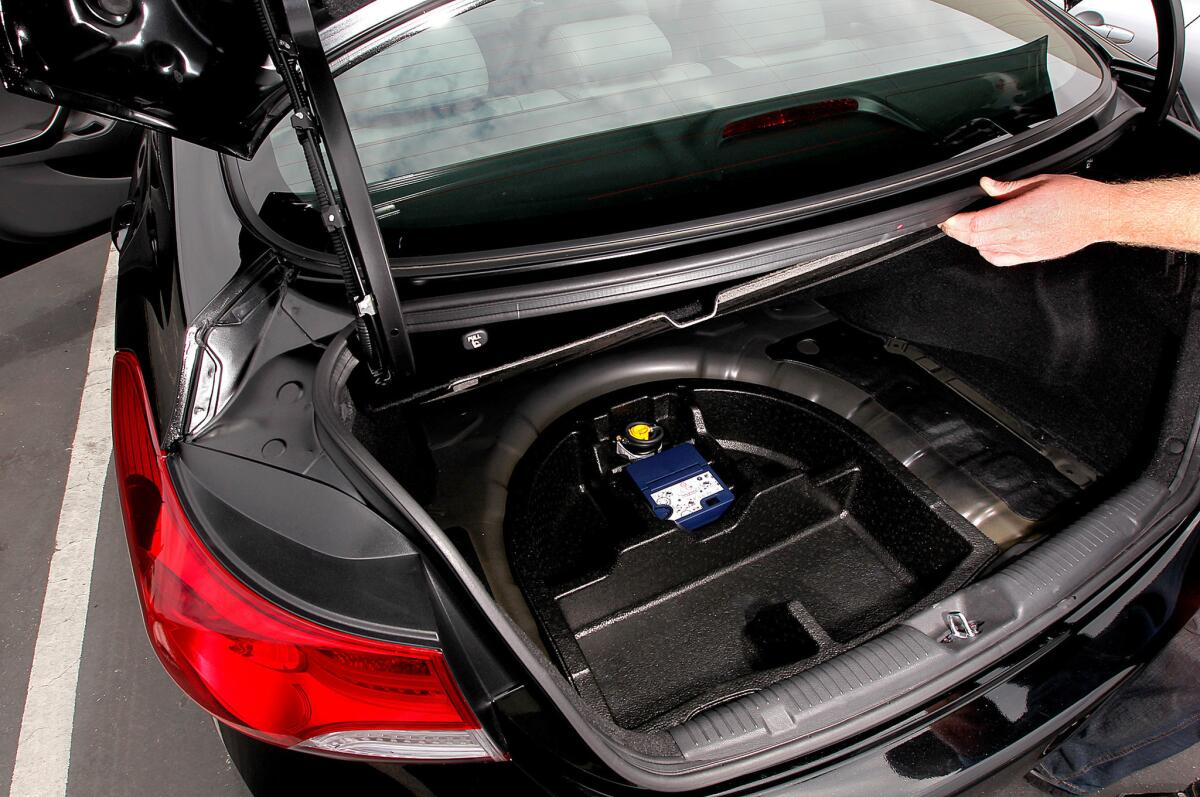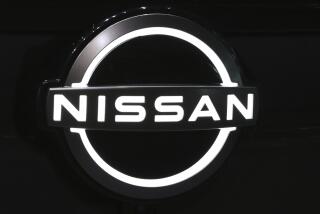Spare us, automakers. They’re removing trunk tires in more new car models

A tire inflator kit replaced a spare tire in the Hyundai Elantra. AAA wants automakers to keep spare tires as standard equipment.
- Share via
Nearly four in 10 new cars are sold without a most basic feature – the spare tire.
A study by the American Automobile Assn., or AAA, found that 36% of 2015 models come with run-flat tires or tire inflation kits instead of a spare tire. That’s up from just 5% in 2006.
“Flat tires are not a disappearing problem, but spare tires are,” said John Nielsen, AAA’s managing director of Automotive Engineering and Repair. “AAA responds to more than 4 million calls for flat tire assistance annually and, despite advances in vehicle technology, we have not seen a decline in tire-related calls over the last five years.”
It’s a trend that cuts across all segments of the auto industry. Cars sold without spares as standard equipment include the Hyundai Elantra and almost all BMW models.
The Auto Club wants car companies to equip all their new vehicles with spare tires.
Automakers are removing the spares to save money and trim weight to improve efficiency as they face increasingly stringent fuel economy standards. Trading a spare tire for an inflation kit removes about 25 pounds from the car.
They are also “eliminating the spare tire well to increase usable interior space in downsized vehicles as well as to improve the aerodynamics of the underside of the vehicle for better mileage,” said Megan McKernan, manager of the Auto Club’s Automotive Research Center.
But these aren’t good trade-offs for consumers, the AAA said.
Tire inflation kits have limited use and are often unable to provide even a temporary fix for many common flats. They can cost up to $300 to replace and only last four to eight years, depending on the manufacturer, AAA said.
The Auto Club tested the most common tire inflation kits. It found they work only when a tire is punctured in the tread surface and the object remains in the tire. The kit then coats the inner wall of the tire with a sealant and a compressor re-inflates the tire.
They don’t work if the puncture-causing object has fallen out, creating a larger hole, or when a sidewall is damaged or a blowout occurs. Those situations will require a tow.
“The reality is these kits can accommodate specific types of tire damage, but having the option to install a spare tire can save stranded drivers time and money,” Nielsen said.
For more automotive news, follow me on Twitter (@LATimesJerry) and Facebook.






